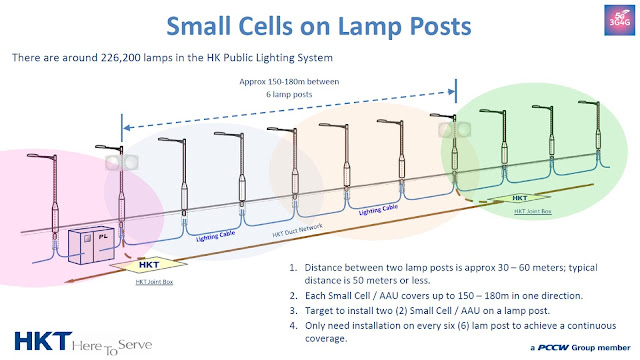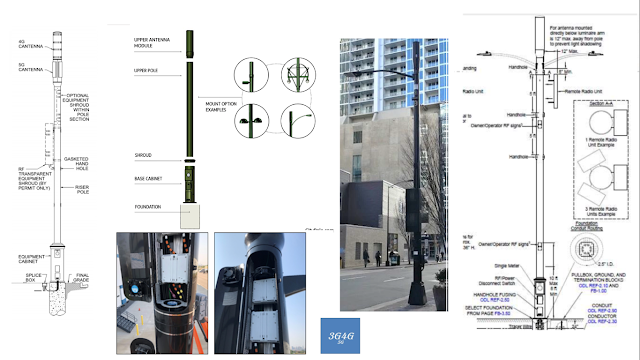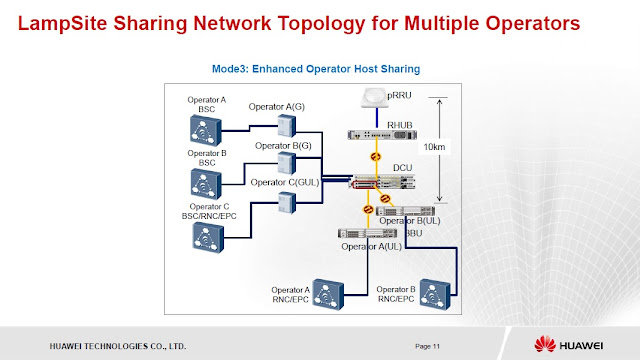In-building coverage is the new battleground in South Korea. According to this
report by Korea Times back in August
SK Telecom, KT and LG Uplus, which have been in cutthroat competition to improve the quality of their fifth-generation (5G) network services, are now in a race to boost 5G data speeds inside buildings.
Their move comes amid growing complaints over disappointing 5G network coverage since the next-generation mobile network services were launched in early April.
SK Telecom said Wednesday it has completed the development of the "5GX In-building Solution" that is capable of doubling the speed of 5G data transfer inside buildings and effectively dispersing data traffic to prevent overload on base stations in crowded areas such as shopping malls and subway stations.
The nation's top mobile carrier said the new technology will be applied to its commercial 5G networks after the third quarter of the year.
"We expect 80 percent of data traffic to be from inside buildings in the 5G era," said Park Jong-kwan, who heads 5GX Labs at SK Telecom. "We will continue to give efforts to provide users with seamless, high-quality 5G services inside buildings and in crowded areas."
The company said its new system features "Active Antenna" technology that allows 5G small cells, which refer to small indoor base stations, to be equipped with eight transmission and reception antennas.
This will double the speed of 5G data transfer as existing indoor base stations are capable of operating four transmission and reception antennas.
KT has also been working hard to expand 5G coverage inside buildings.
In May, the nation's largest broadband service provider and second-largest mobile carrier interlocked 5G repeaters with commercial 5G networks in cooperation with small and medium business partners.
Installed inside buildings where radio waves from base stations can hardly reach, the device helps improve the quality of 5G services.
KT is in charge of expanding 5G coverage in 95 large buildings out of 119 nationwide, such as airports and KTX stations, in a joint project by the three mobile carriers.
LG Uplus, the smallest player, also has been active in installing repeaters in small and medium buildings and underground parking lots to expand 5G coverage.
The company is planning to expand the application of beam-forming and multi-user MIMO (multiple-input and multiple-output) technologies to its 5G networks nationwide.Back in May, SK Telecom
won SCF Small Cell Awards 2019 in the category of “Commercial Small Cell Design and Technology” for commercializing the world’s first 5G NR RF repeater. According to the press release:
SK Telecom won this year’s SCF Small Cell Awards for developing and commercializing, for the first time in the world, two different types of 5G NR RF repeaters operating in the 3.5GHz band in 2018. 5G RF repeaters, which amplify 5G radio signals to allow them to travel greater distances, are used to enhance 5G service quality by improving coverage for in-building areas.
SK Telecom’s RF repeater is built with 5G NR standard-based Time Division Duplex (TDD) Synchronization detection technology, which enables a more efficient use of limited frequency resources. In addition, the 5G repeater provides wide bandwidth support and operational optimization features.Going back to the Small Cells World back in May, SK Telecom presented their solution but the presentation was not shared. Here are some relevant pictures from their presentation:
As can be seen in the picture (click to enlarge), depending on the use case and location, the InBuilding solution would change from Small cells to AAU and Repeaters.
As you can see in the picture above, the 3.5/28 GHz layer split solution improves capacity of the building by creating multiple layers to improve the capacity. There is a new press release on this topic, which is covered in the post later on.
The Speed Repeater above and the RF Repeater below is backhauling on the existing macro, similar to the In-band backhauling (
IBBH) I have described earlier or Sprint/Airspan
MagicBox.
In a recent press release, SK Telecom
announced that they have expanded the 'Layer Splitter', a dedicated equipment for 5G inbuildings, to 1,000 buildings, starting with WeWork Seolleung Branch (Gangnam-gu, Seoul).
SK Telecom customers will be able to use 5G services twice as fast as existing in-building equipment in major domestic buildings such as shopping malls and department stores.
'Layer Splitter' is the equipment based on '5GX In-building Solution' developed by SK Telecom in the world in August. If existing indoor equipment is equipped with two antennas for data transmission and reception, 'Layer Splitter' is a four-integrated antenna equipment that can process more data simultaneously in the same frequency band.
It also integrates several signal conversion devices * that go through for communications services. The integrated device is half the size of the device as before, and data transfer rates are faster with fewer signal conversion steps. In addition, the integrated device is placed forward in the base station and only the antenna is installed inside the building, enabling quick action in the event of a problem without visiting the building.
※ Previously, it had to go through four-step signal conversion (digital signal → optical signal → base signal (IF) → optical signal → wireless signal (RF)), but 'layer splitter' Combined 'matcher' and 'donor', a device that converts the base signal (IF) into an optical signal
SK Telecom plans to expand in-building coverage centered on 'layer splitters' in buildings with a large number of floating populations such as large shopping malls and department stores.
Wework, the first construction site, is a shared office where several ICT-related companies collaborate and expect various business models based on Korea's best 5G infrastructure. In particular, SK Telecom and Wework have been working together since last year's strategic partnership, including building 5G infrastructure.
Chang-Kwon Chung, head of infrastructure engineering group at SK Telecom, said, SKT customers can experience differentiated communication quality with the only equipment dedicated to 5G in-building. “In-building will be able to efficiently accommodate in-building traffic that will continue to increase in the 5G era. "We will continue to advance our proprietary solutions."Hopefully we will learn more about this solution in near future.
Related Posts:








































